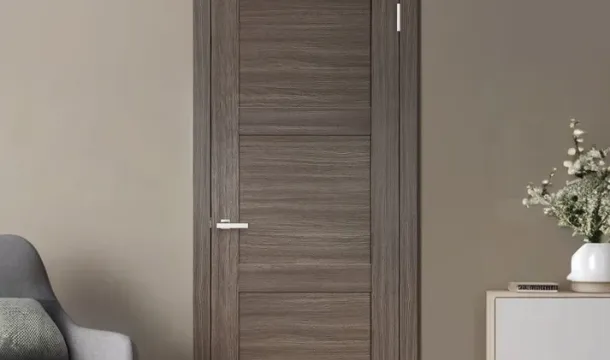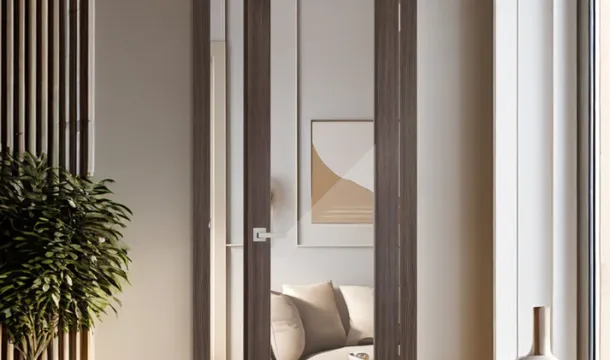How to Install Hardware for Interior Doors
Popular Articles
Installing hardware for interior doors may seem like a small part of your home improvement project, but it plays a crucial role in the functionality, security, and aesthetic of your door. Proper installation ensures that your doors open and close smoothly, providing privacy and enhancing the look of your home. This guide will cover everything you need to know about installing door hardware, including handles, hinges, locks, and strike plates.
Tools and Preparation
Before beginning the installation process, gather all the necessary tools. You will need a tape measure, a pencil, a power drill, drill bits, a chisel, a screwdriver, and a utility knife. Make sure you also have the door hardware kit, which usually includes hinges, screws, a door handle, a latch, and a strike plate.
It is important to work in a well-lit and clean area to avoid losing small parts like screws. Additionally, double-check that you have all components needed for the installation. Missing parts can lead to delays and incomplete work.
Installing Hinges
The first step in installing hardware is to attach the hinges to the door and frame. Most interior doors have three hinges, which are spaced evenly along the door edge. Begin by marking the hinge locations on both the door and the frame using a pencil.
Once marked, use a chisel to create shallow recesses on the door edge where the hinges will be seated. The recesses should be deep enough for the hinge to sit flush with the surface of the door. After the recesses are prepared, align the hinges in place and use screws to attach them to the door.
Repeat the process for the door frame. Hold the door in position (having a second person to help can be beneficial) and screw the other half of each hinge to the frame. Make sure the hinges are aligned correctly, so the door swings smoothly without rubbing against the floor or the frame.
Installing the Door Handle and Latch
After the hinges are installed, it’s time to install the door handle and latch. Start by marking the position for the door handle on the door, typically about 36 inches from the bottom. Use a hole saw drill bit to create a hole for the handle and latch.
Next, drill a smaller hole on the door edge to accommodate the latch mechanism. Insert the latch into the hole and secure it with screws. Once the latch is in place, attach the handle to both sides of the door, ensuring that both halves align correctly.
Secure the handle by tightening the screws. Test the handle to make sure it turns smoothly and that the latch retracts and extends without any issues.
Installing the Strike Plate
The strike plate is a metal plate attached to the door frame that the latch fits into when the door is closed. To install the strike plate, close the door and mark the location where the latch meets the door frame.
Use a chisel to carve out a shallow recess on the door frame for the strike plate. The recess should be deep enough for the strike plate to sit flush with the frame. Align the strike plate over the recess and secure it with screws.
Once installed, close the door to ensure that the latch aligns properly with the strike plate and that the door closes securely. Adjust the position if necessary to ensure a snug fit.
Adjustments and Troubleshooting
After installing the hardware, check to see if the door functions properly. If the door doesn’t close correctly or if there is resistance when opening or closing, some adjustments may be needed. For example, if the latch does not align with the strike plate, try adjusting the position of the strike plate slightly up or down.
If the door rubs against the frame or floor, it could be due to misaligned hinges. In such cases, you may need to adjust the hinge positions or add shims to correct the alignment. Always make small adjustments and test frequently to avoid overcorrecting.
Final Touches
Once the hardware is installed and properly adjusted, make sure all screws are tightened securely. Loose screws can cause the door to sag over time or make the handle feel wobbly. It is also a good idea to lubricate the hinges with a small amount of oil to ensure smooth operation and to prevent squeaking.
For an added touch, consider matching the door hardware finish to other fixtures in the room, such as light switches or cabinet handles, to create a cohesive look. Popular finishes include brushed nickel, chrome, brass, and matte black.
Conclusion
Installing hardware for interior doors is a straightforward task that can significantly improve the look and functionality of your home. With the right tools and a bit of patience, you can ensure that your doors are not only aesthetically pleasing but also functional and secure. Proper installation of hinges, handles, latches, and strike plates will result in doors that operate smoothly and last for years to come.
Take your time during the installation process, measure accurately, and make any necessary adjustments to achieve the best results. With attention to detail, your interior doors will enhance both the beauty and utility of your home.
Popular Articles

Soundproofing Interior Doors: Which Options Are Best for Your Home?

Choosing the Perfect Interior Doors for Your Canadian Home
